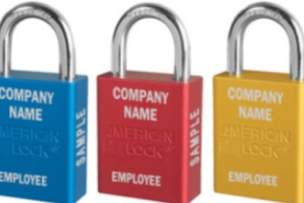Fall protection continues to hold the No. 1 spot on the OSHA Top 10 violations list—surpassing hazard communication violations by a margin of 40 percent. Here’s what else safety chiefs need to know.
When the U.S. government revealed its updated list of most-cited safety violations for fiscal 2019, there was good news in that total citations on its top 10 list had dropped 15 percent since the previous year.
What hasn’t changed is that fall protection continues to be a tough safety challenge.
For the ninth consecutive year, fall protection sits as the No. 1 most-violated standard, based on citations issued by the Occupational Safety and Health Administration during the past year—far outpacing violations for the other nine standards on the list and edging toward two-to-one over hazard communication at No. 2.
When it comes to fall protection in metalworking and manufacturing facilities, “commonsense often is not common,” says MSC Safety Specialist Damon Cassell.
How to Avoid 2019’s Top OSHA Violation: Fall Protection
To reduce fall incidents and violations, businesses need to adopt the zero-tolerance practices common within the gas and utility industry, Cassell recommends.
“If you’re dangerous, they will walk you right off the property,” he says.
The culprit is often the technical nature of both the fall safety gear itself and applying the OSHA standard’s rules, Cassell says. “In the safety world, if it’s difficult, people are a lot less likely to do it.”
For instance, depending on the environment, it’s not uncommon for a worker to have to run five or six calculations while scaling equipment on a plant floor.
Safety teams need to do a couple of things to make fall safety easier and more likely to be adopted, Cassell advises. First, simplify its use: Avoid multiple calculations whenever possible, and provide signage and training so workers can quickly determine required lanyard lengths.
“Make sure the fall distance is not shorter than your lanyard because you’re going to hit the ground. Also, make sure you tie off,” Cassell says. “I can’t tell you how many times I have seen people with all this gear on not tie off to the right lanyard or anchor.”
Safety culture is a factor here too. The harnesses and gear can be unwieldy to wear—particularly when a worker first becomes certified to use a harness, he points out.
Training and setting expectations can help overcome wear issues and encourage workers to never put themselves in harm’s way, Cassell says. “If you mess up, it’s likely you will die.”





Talk to Us!
Guilty as charged.
In the twilight of my career as a diesel mechanic and garage owner I am proud of our record of safety.
I am not proud of the internal lack of enforcement and the ignorance of safety regulations.
We are all busy trying to keep thing running and get the bills paid pushing internal (company induced) safety enforcement down the priority list.
We, (independent business owners) need help and reminders that keep our workforce safe and on the job.
Our company's most violated regulation is eye and face protection.
I call out our violators when I see them at risk but unsupervised, the employees take risk everyday.
Thank you for the reminder that safety should be job one.
73Thanks for sharing with us Matt.
We understand the mounting challenges of shops today. In some cases, Safety does fall to the wayside. We believe in a culture of Safety, where it's embraced and enforced from the top down. We find that when that happens, workplace safety becomes everyone's responsibility and employees get to go home injury free. It's not an easy task, but we commend you for your focus.
72I can understand the fall protection failure is high. But equally as dangerous is the method of tying off and what you tie off to. Pieces of cable strung over a job is NOT an engineered life line. More attention needs paid to engineered tie off points. if the attachment point does not hold, your fall restraint becomes utterly useless and in some cases worse off for the employee.
68Leave a reply
Your email address will not be published. Required fields are marked *